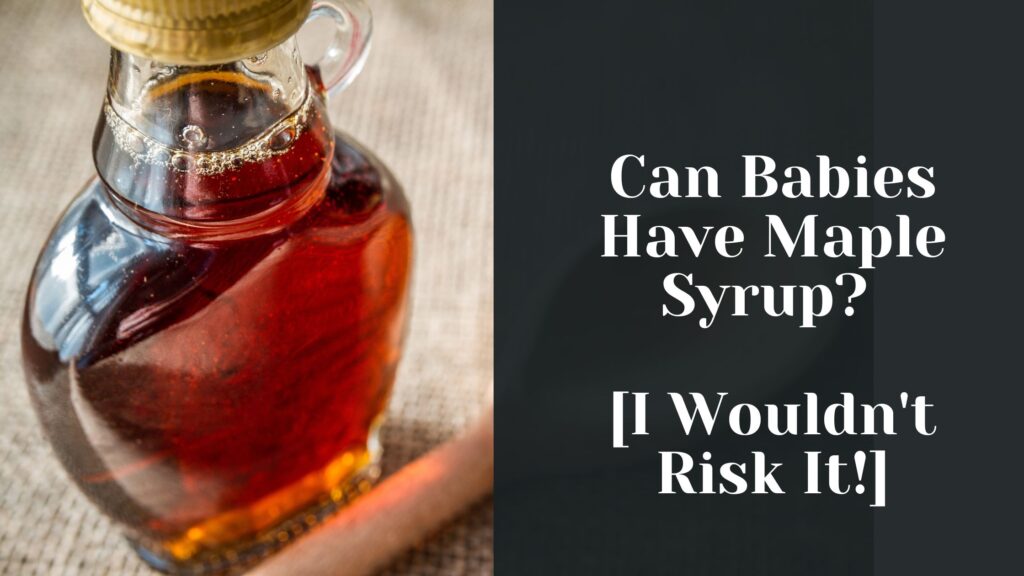Introducing solid foods to babies is an exciting milestone for most parents.
However, it is important to make sure that our little ones are getting the nutrients they need to grow and thrive.
We also want to be mindful of any potential allergens or risks that certain foods may pose.
One question I often hear parents ask is “Can babies eat kiwi?”.
In this article, we’ll explore the safety and benefits of introducing kiwi to babies, as well as how to prepare and serve it.
Can Babies Eat Kiwi?
Kiwi is generally considered safe for babies to eat, but it is important to follow the age recommendations for introducing solid foods to your baby.
According to the American Academy of Pediatrics (AAP), babies can start eating solid foods around 6 months of age.
At this age, babies are developmentally ready to handle the texture and consistency of solid foods, and they have typically lost the extrusion reflex, which is the natural tendency for babies to push food out of their mouths with their tongues.
Kiwi is a good food choice for babies because it is high in vitamin C, which is important for supporting a healthy immune system.
One kiwi contains about 70 mg of vitamin C, which is more than the daily recommended intake for babies, so make sure your baby eats kiwi in moderation.
Kiwi is also a good source of dietary fiber, which can help with digestion and prevent constipation.
There are a few precautions to consider when introducing kiwi to babies.
Beware of Choking Risk
It is important to remove the seeds before giving kiwi to babies. You can do this by cutting the kiwi in half and scooping out the seeds with a spoon, or by peeling the skin off and slicing the kiwi into small pieces.
Watch Out For Allergic Reactions
Kiwi can cause allergic reactions, especially in children.
Symptoms of a kiwi allergy may include:
- numbness in the tongue, lips, or throat
- tingling in the mouth and throat that leads to swelling
- severe abdominal pain or cramps
- difficulty breathing
- a sudden drop in blood pressure
- nausea, vomiting, or diarrhea
- dizziness or loss of consciousness
- a fast heart rate
If your baby shows any signs of an allergic reaction after eating kiwi, it is important to seek medical attention.
It is also a good idea to talk to your healthcare provider about any other potential allergies in your family and to be cautious when introducing new foods to your baby.
How To Prepare Kiwi For Babies
There are a few different ways to prepare kiwi for babies, depending on your baby’s age and developmental stage. Here are some options:
1. Pureeing
If your baby is just starting out with solid foods, you may want to puree the kiwi to make it easier for them to eat.
To do this, you can peel the skin off of the kiwi and slice it into small pieces.
Place the kiwi pieces in a blender or food processor and puree until smooth.
You can also mix the pureed kiwi with other pureed fruits or vegetables for added flavor and nutrition.
2. Slicing
As your baby gets older and becomes more adept at handling different textures, you can slice the kiwi into small pieces for them to pick up and eat with their fingers.
Be sure to remove the seeds and cut the kiwi into small, bite-sized pieces to prevent choking.
You can also mash the kiwi with a fork to make it easier for your baby to eat.
3. Skinning
Some parents may prefer to leave the skin on the kiwi for the added fiber and nutrients.
If you choose to do this, you can soften the skin by cooking the kiwi or by peeling it with a vegetable peeler.
You can then slice the kiwi into small pieces or mash it with a fork.
No matter which method you choose, it is important to wash the kiwi thoroughly to remove any dirt or pesticides. You can do this by rinsing the kiwi under cold water and patting it dry with a paper towel.
Storing Leftover Kiwi
When it comes to storing kiwi, you have a few options.
If you have leftover pureed or sliced kiwi, you can store it in the fridge in an airtight container for up to 3 days.
You can also freeze the pureed or sliced kiwi in an ice cube tray or in a resealable plastic bag.
When you’re ready to use it, simply thaw the kiwi in the fridge or under running water.
Serving Kiwi to Babies
There are many ways to incorporate kiwi into your baby’s diet. Here are a few ideas:
- Mix it with other pureed fruits or vegetables: You can mix pureed kiwi with other pureed fruits or vegetables, such as applesauce, pears, or peas, to add variety and flavor to your baby’s meals.
- Add it to oatmeal or yogurt: Kiwi can be a delicious addition to oatmeal or yogurt. Simply mash the kiwi with a fork and stir it into the oatmeal or yogurt. You can also slice the kiwi and mix it in.
- Offer it as a snack: You can offer your 6+ months old baby slices of kiwi as a snack and you can also mix sliced kiwi with other finger foods, such as cheese cubes or crackers.
Can Babies Eat Kiwi Skin?
The skin of a kiwi is edible, but it may be tough for babies to chew.
If you choose to leave the skin on the kiwi, it is important to soften it first.
You can do this by cooking the kiwi or by peeling it with a vegetable peeler.
You can then slice the kiwi into small pieces or mash it with a fork.
Leaving the skin on the kiwi can be a good way to add extra fiber and nutrients to your baby’s diet.
Kiwi skin is a good source of dietary fiber, which can help with digestion and prevent constipation.
It is also rich in antioxidants, which can help to protect against oxidative stress and support overall health.
If you’re not sure whether your baby is ready for the texture of kiwi skin, you can try peeling the kiwi first and then gradually introducing the skin as your baby gets older and becomes more adept at handling different textures.
How Much Kiwi Can Babies Eat?
The appropriate serving size for babies will depend on their age, size, and appetite.
According to the Centers for Disease Control and Prevention (CDC), the recommended serving size for babies 6-8 months old is about 1/4 cup to 1/3 cup of solid foods per meal.
For babies 9-12 months old, the recommended serving size is about 1/2 cup to 3/4 cup of solid foods per meal.
FAQ
Can babies eat kiwi seeds?
It is generally not recommended to give babies kiwi seeds, as they may be a choking hazard. It is important to remove the seeds before giving kiwi to babies, either by cutting the kiwi in half and scooping them out with a spoon, or by peeling the skin off and slicing the kiwi into small pieces.
Is kiwi a common allergen for babies?
Kiwi allergies can occur, especially in children. If you have a family history of allergies or if your baby has shown signs of an allergic reaction to other foods, it is a good idea to talk to your healthcare provider before introducing kiwi.
Is kiwi a good source of nutrients for babies?
Kiwi is a good source of nutrients for babies, including vitamin C and dietary fiber. One kiwi contains about 70 mg of vitamin C. Vitamin C is important for supporting a healthy immune system and for maintaining healthy skin and tissues. Kiwi is also a good source of dietary fiber, which can help with digestion and prevent constipation.
Conclusion
Kiwi is generally considered safe for babies to eat and can provide a variety of nutrients and benefits.
Make sure you follow the age recommendations for introducing solid foods and to be mindful of any potential allergens or risks.
Kiwi can be prepared in a variety of ways, including pureeing, slicing, or leaving the skin on, and can be mixed with other pureed fruits or vegetables or added to oatmeal or yogurt.
If your baby shows signs of an allergic reaction after eating kiwi, it is important to seek medical attention and to follow your healthcare provider’s guidance on how to manage the allergy.
Overall, introducing a variety of foods to babies is important for exposing them to different flavors and textures and for supporting their overall health and development.


